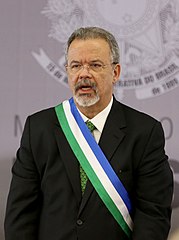Design
Design
Personality
Chart Properties
Your Cross represents the specific theme of your life. This cross embodies your unique potential & the lessons you're here to learn, providing a roadmap to fulfilling your life purpose.
We use the UTC birth time and date to do the calculations required to generate your Human Design chart.
Buy Tokens
Pay as you use, no expiry and no subscription required.Prompt Ideas
Get inspired with some epic prompt ideas.Werner March's Biography
German architect who designed the Berlin Olympic Stadium for the 1936 Summer Olympics in Germany. The stadium, which has a capacity of 74,228, is one of Germany’s major sports venues and was used both for the 1974 and 2006 FIFA World Cup.
He was a son of Otto March (1845-1913), and brother of Walter March, both also well-known German architects.
Werner March created his most famous work, Berlin Olympic Stadium, on the site of the Deutsches Stadion, a stadium designed by his father, Otto March for use in the 1916 Summer Olympics (which were later cancelled after the outbreak of World War I). It is unclear whether March was influenced to use a more conservative design to suit Nazi tastes (claimed by Albert Speer), or whether March devised a grand, sweeping architecture that anticipated the spirit of the Third Reich.
He also created plans for the Central Stadium (Leipzig, GDR). He designed Carinhall, Hermann Göring’s hunting lodge-style country residence near Berlin.
From 1956 to 1960 he designed the Cairo International Stadium in Egypt. Designed as a multi-purpose stadium for Olympic sports, it is primarily used as a venue for soccer games.
Together with his brother Walter, Werner March won a gold medal in the Art competitions at the Summer Olympics in 1936. March died on 11 January 1976 in Berlin-Dahlem at age 81.
Link to Wikipedia biography
Werner March
Your Cross represents the specific theme of your life. This cross embodies your unique potential & the lessons you're here to learn, providing a roadmap to fulfilling your life purpose.
We use the UTC birth time and date to do the calculations required to generate your Human Design chart.






